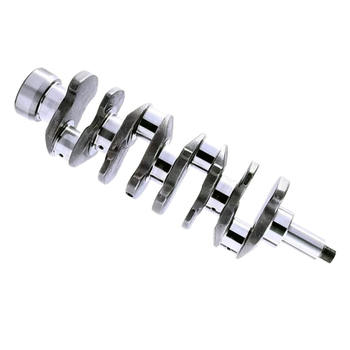Introduction
Have you ever wondered how the design of a crankshaft affects the speed of the pistons in an engine? As it turns out, this relationship is crucial in determining an engine's power and efficiency. In this article, we'll delve into the fascinating world of crankshaft design and piston speed, uncovering the secrets to unlocking optimal engine performance.
The Basics of Crankshaft Design
At its core, a crankshaft's job is to convert the reciprocating motion of the pistons into rotational motion, which ultimately drives the wheels of a vehicle. To achieve this, crankshafts are designed with offset cylinders and crank throws, which create a sinusoidal motion for the pistons. This design allows for smooth power delivery and reduced vibrations.
The Role of Crankshaft Throw and Offset
The crankshaft throw and offset play a significant role in determining piston speed. The throw, or radius, of the crank determines the distance the piston travels with each rotation. Meanwhile, the offset helps to balance the forces acting on the piston and crankshaft, reducing stress and wear.
Piston Speed and Engine Performance
When it comes to engine performance, piston speed is a critical factor. Higher piston speeds can lead to increased power output, but they also come with challenges such as increased stress on engine components and higher fuel consumption. That's why it's essential to strike a balance between piston speed and engine durability.
Optimizing Piston Speed for Maximum Performance
To optimize piston speed, engineers consider various factors, including crankshaft design, connecting rod length, and piston weight. By carefully balancing these elements, engineers can achieve the ideal piston speed for a given engine, maximizing power output while maintaining durability and efficiency.
Practical Applications
Now that we understand the relationship between crankshaft design and piston speed, let's explore some practical applications:
Conclusion
In conclusion, the relationship between crankshaft design and piston speed is a complex yet fascinating aspect of engine performance. By understanding this relationship and applying the principles of crankshaft optimization, we can unlock the full potential of our engines, maximizing power and efficiency while minimizing stress and wear.
So, the next time you're working on your engine or considering a performance upgrade, remember the importance of crankshaft design and piston speed. With a little know-how and some careful tuning, you can unleash the true power of your engine and enjoy a smoother, more efficient ride.
As we've seen, the relationship between crankshaft design and piston speed is a delicate balance of power, efficiency, and durability. By understanding this relationship and applying the principles of crankshaft optimization, you can unlock the full potential of your engine and enjoy a smoother, more efficient ride.
So, what are you waiting for? Start exploring the world of crankshaft design and piston speed today, and see the difference it can make in your engine's performance.




